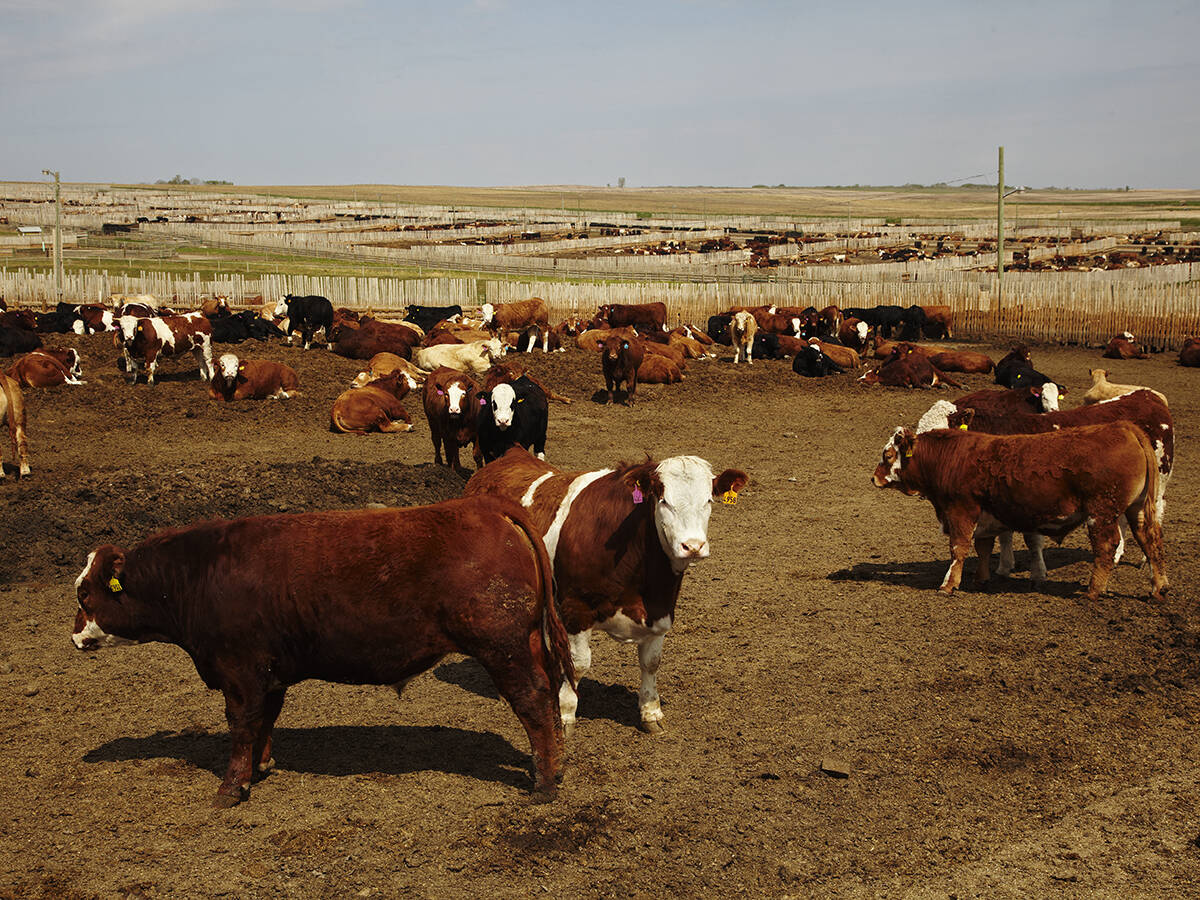Fed prices under pressure
With XL Foods still closed last week, fed cattle prices remained under pressure and carcass weights climbed.
Steers were 904 pounds in the week ending Oct. 6, up from 894 lb. the previous week and 898 lb. last year at the same time.
Feedlots aggressively marketed large lots of fed cattle midweek at prices mostly steady to $1 per hundredweight lower than the previous week.
Steers averaged $106.34 live for the week, down eight cents, and heifers averaged $105.05, down $1.38.
Most of the dressed trade was around $178 per cwt. delivered.
Read Also

Canfax cattle market report – November 13, 2025
The Canfax cattle market report for November 13, 2025. Fed & feeder cattle prices, butcher cow trends, and cutout market insights.
Not all cattle offered were sold, and there was carry over.
A few formula-priced cattle sold to American buyers, and Saskatchewan saw light cash trade at a terminal market.
Total weekly sale volume of 15,832 head was up 15 percent but three percent down from last year.
The Alberta cash-to-futures basis widened by $1 to -$16.41.
Weekly exports to Sept. 29 were 8,618 head, down nine percent from the previous week.
The market will not improve until XL is back to full production.
Feedlots and packers were in a faceoff in the United States. Feeders are facing losses of $150-$200 per head and holding out for higher bids.
Cow prices edge up
Sellers of non-fed cattle have slowed sales in hope of better prices ahead.
Competition from U.S. packers and Canadian producers speculating on feeder cows added modest price support last week.
Butcher cows traded generally 25 cents per cwt. higher with D1, D2 cows at $60-$65, averaging $64, and D3s at $50-$65, averaging $56.80.
Rail grade cows were $130-$135, up $2. The average bull price rose for the first time in 14 weeks.
Weekly exports to Sept. 29 were 5,547, up nine percent from the previous week.
Heavy feeders down
The steer and heifer average price fell 17 to 20 cents per cwt.
With the exception of 300 to 400 pound heifers, all classes of feeders are now trading below year-ago levels.
Prices are the lowest of the year and feeding losses have some producers unwilling to take on the financial risk associated with finishing cattle.
Short-keep feeders fell $2-$3 last week while mid-weight heifers were steady. Feeders 900 lb. and heavier have fallen $5.50-$6.75 per cwt. over the past two weeks. Reports of clean-up pens of yearlings trading through commercial auction facilities pressured prices.
Demand for calves remains strong while light stockers have been trending steady to lower.
There is a $18.62 spread between steers weighing 450 lb. at $171.79 per cwt. and those weighing 550 lb at $153.17. It is the widest spread this year.
Auction volumes totalled 24,071, up 30 percent from the previous week.
Feeder exports to Sept. 29 were 1,784, up 423 from the previous week.
Auction volumes are anticipated to increase now because of cooler fall weather and receding grass reserves.
U.S. beef steady
U.S. cut-out values were steady with Choice at $191.31 US and Select at $177.32. Carcass weights in the U.S. are at record highs and are allowing packers to slow slaughter.
Slaughter last week was 628,000, down 3.4 percent from last year’s 650,000. Retail beef business is mostly humdrum, but the reduced slaughter levels have helped firm prices.
Canadian cut-out values were unavailable because of insufficient data due to XL Foods being unable to participate in the weekly boxed beef survey.
This cattle market information is selected from the weekly report from Canfax, a division of the Canadian Cattlemen’s Association. More market information, analysis and statistics are available by becoming a Canfax subscriber by calling 403-275-5110 or at www.canfax.ca.














